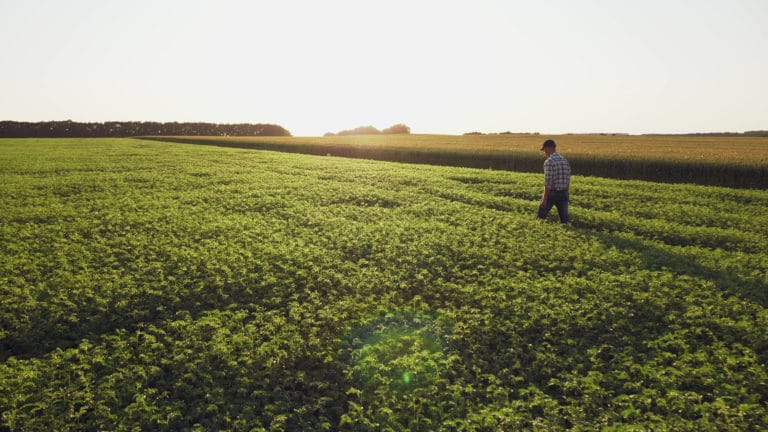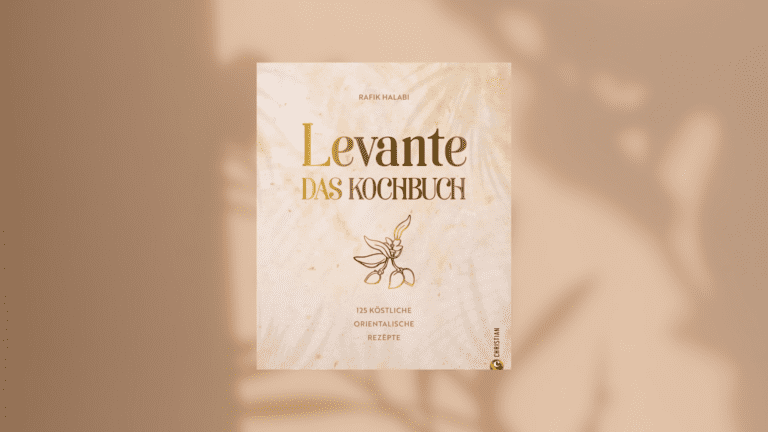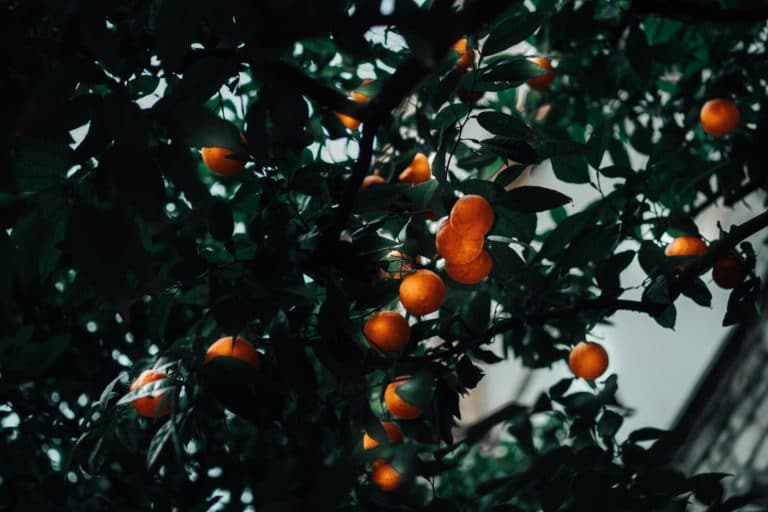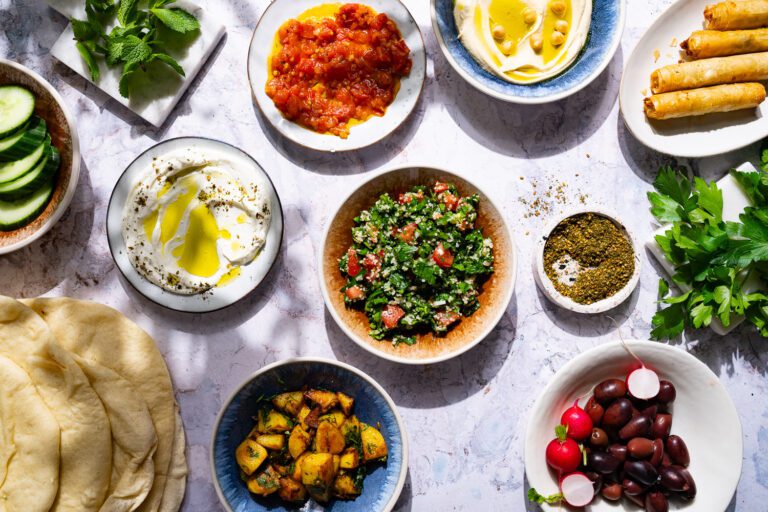Legumes – everything you need to know!
Legumes are not only super delicious, but also very versatile and extremely healthy! You can make creamy hummus from chickpeas, delicious stews from beans, salads and great soups from lentils and you can conjure up wonderful stews from peas. And one of the best things is that you do something really good for your body, but also for the climate. In this guide, you’ll learn everything you need to know about pulses: everything about nutrients, storage, preparation and tips & tricks.
What are legumes and what are the types?
There are sometimes over 19,000 different types of legume plants. They all have one thing in common: the so-called fruits of these plants are all packed in pods. So it is very logical that these small fruits are then called legumes, isn’t it?
But what all belongs to these seeds from the pod? Here is a list of legumes:
- Beans
- Peas
- Lenses
- Chickpeas
- Peanuts
Perhaps you are like me when you read that peanuts belong to the legumes and are not nuts (although they are called so). But if you take a close look at the peanut with its “packaging”, you will see that it is a pod, as you may already know from beans or peas.
Nuts, on the other hand, are not legumes!
Let’s take a look at the individual species:
Beans
Beans are really known all over the world and you will certainly find at least one really delicious bean dish in every country. Be it kidney beans, white beans, black beans, green beans, broad beans … The list can be very long, so I’ll just cut it short: What would the world be without a really good chili with beans?

Peas
As with beans, there is a whole range of different peas. Green peas (I love them), yellow peas or even chickpeas. Personally, I couldn’t live without chickpeas alone! What would the world be without creamy hummus?
Chickpeas
Even though I just said something about chickpeas, they have a very special meaning for me and oriental cuisine. Besides hummus, there is namely a whole armada of really delicious dishes and meals. By the way, chickpeas are also called garbanzo beans and are one of the oldest legumes in the world that have been cultivated by humans. You can find more about chickpeas here.

Lenses
These little discs are an absolute all-rounder! Lentils also come in completely different colors and even shapes. My favorite lentils are the red lentils, which I like to make into a soup. Also, the dark beluga lentils, because they keep a nice firm shape after cooking and fit wonderfully in salads. In addition, you can also prepare great spreads from beluga lentils.

Soybeans
The reason why I list soybeans separately is their great importance in world cuisine. Soybeans are very versatile and the basis for e.g. tofu, tempeh or as a milk alternative. Soybeans are very healthy and have a high protein content, which makes this legume particularly nutritious. It is also good to know that soybeans, as well as peanuts, are also grouped in the category of oilseeds and nuts because of the composition of nutrients.
Peanuts
And since we’ve just been talking about them, let’s move on to peanuts. For my part, these little things were not even close to being on my radar when it comes to legumes. Just goes to show what a difference the naming of a plant can make. Peanuts are actually not nuts, but belong to the legume family. And of course, peanuts are known all over the world as a snack, peanut butter or delicious peanut sauce. These delicious fruits are rich in proteins and are also very fatty.

Where are they grown?
In fact, pulses can be grown almost anywhere. So you’ll probably find regionally grown pulses in your area, too – maybe even in your own garden? I used to love opening little pea pods and eating the fresh, sweet-tasting peas directly.
It is an absolute stroke of luck that these little wonders really do grow almost everywhere on earth. This is because they are very nutritious and also enrich the soil with vital nitrogen that other plants need to grow.
Proteins, vitamins and more good things
Legumes are healthy – period! In fact, this applies to all species! As indicated above, their composition of nutrients is extremely optimal for us. Legumes contain a lot of protein, which is really super important for a healthy metabolism. This also makes the fruits even more important for all vegetarians and vegans.
They contain a lot of fiber, which is incredibly good and important for your satiety and digestion. Your heart health benefits as well.
And while we’re on the subject of enumerating how incredibly healthy legumes are – here’s a little list of benefits. Legumes contain a lot:
- Iron: Is important for the formation of red blood cells, for example.
- Vitamin B12: Important for a healthy nervous system.
- Protein: Very important for a healthy metabolism and the building of tissues and muscles.
- Fiber: Important for your digestion.
- Folic acid: Known as vitamin B9, important for healthy pregnancy as well as heart health.
- Antioxidants: Protects against free radicals and thus prevents chronic diseases.
- Omega-3 fatty acids: Are essential for your heart health.
- Essential amino acids: These cannot be produced by the body itself and must be obtained from food. They are important for good immune function.
- Manganese: A trace element that is important for bone health.
You realize, legumes are an absolute superfood – and they also taste incredibly delicious!
Buying pulses: Dried or precooked?
You can really get pulses in every supermarket, discount store, organic market or weekly market. There is no way around them. But sometimes the question arises “Should I buy dried or already precooked?”
I think both have their advantages and disadvantages. You can get pulses everywhere both dried or precooked and preserved in jars or cans. Personally, I go for the pre-cooked pulses when I’m in a particular hurry and want to process them directly.
However, I always have dried beans, chickpeas and lentils in my pantry. They keep well and I can easily store them in jars or cans. Nothing breaks and I can then simply soak them as soon as I need them.
Soaking & Cooking
Except for peanuts and lentils, you should soak all other dried legumes in fresh water before cooking. This is best done for 12 hours or simply overnight. Then you can drain them and cook them with fresh water until they have reached the desired cooking stage.
Of course, you can also cook the dried legumes directly in water, but then it really takes forever and you waste a lot of energy. Therefore: Dried pulses always soak first, then cook!
Why are pulses dried? Well, to make them durable. After all, dried these little miracle pills are almost invulnerable.
The cooking time of soaked legumes is roughly the following:
- Beans: about 1 hour
- Chickpeas: about 40 minutes
- Lentils: Depending on the type – 15 to 30 minutes
Please note that these are rough indications that may vary according to type and size. So test them regularly and see if they have reached the right consistency for you.
- Halabi, Rafik (Author)
Legumes and the issue of intolerances
Basically, legumes are super healthy, of course. But there are one or two things to keep in mind if you have an intolerance. For example, they can cause digestive difficulties for some people. This is due to certain sugars (fermentable oligo-, di-, mono-saccharides and polyols) in the fruits. If you belong to these people, you should of course keep the consumption rather low. The symptoms are then e.g. abdominal pain or diarrhea.
You also need to know that soy and peanuts in particular are allergens and can cause allergic reactions in allergy sufferers. The same applies if you have an intolerance to histamine.
Good for the climate
Legumes actually play an important role in the fight against climate change. This is because they have the ability to absorb and fix nitrogen from the atmosphere. They then release the nitrogen into the soil. This in turn reduces the need for synthetic fertilizers.
This is very important because the production and application of synthetic fertilizers really produces large amounts of greenhouse gases. In addition, the cultivation of legumes can contribute to the overall improvement of soil health. This is because they add organic matter to the soil, thereby helping to maintain soil fertility.
Tips & Tricks
There are a few clever tricks when preparing legumes. Especially if you want to save time on soaking and cooking.
Baking powder or baking soda are a little booster when you are in a hurry to cook. If you add a small amount of baking soda to the soaking or cooking water, the cell walls of the legumes are broken down. This makes chickpeas and beans soften faster. In some cases, this can greatly reduce the cooking time.
Another tip is that you can use the cooking water of legumes perfectly as an egg substitute. The so-called aquafaba you can whip like egg whites really nice and creamy and prepare with it, for example, mousse or meringue.
My conclusion
What more can I say? As we have just learned, legumes are mega healthy, very good for the climate, help you with the vegetable protein supply and are even incredibly versatile, cheap to have and also really tasty. If you have any questions about legumes, feel free to drop me a comment.








